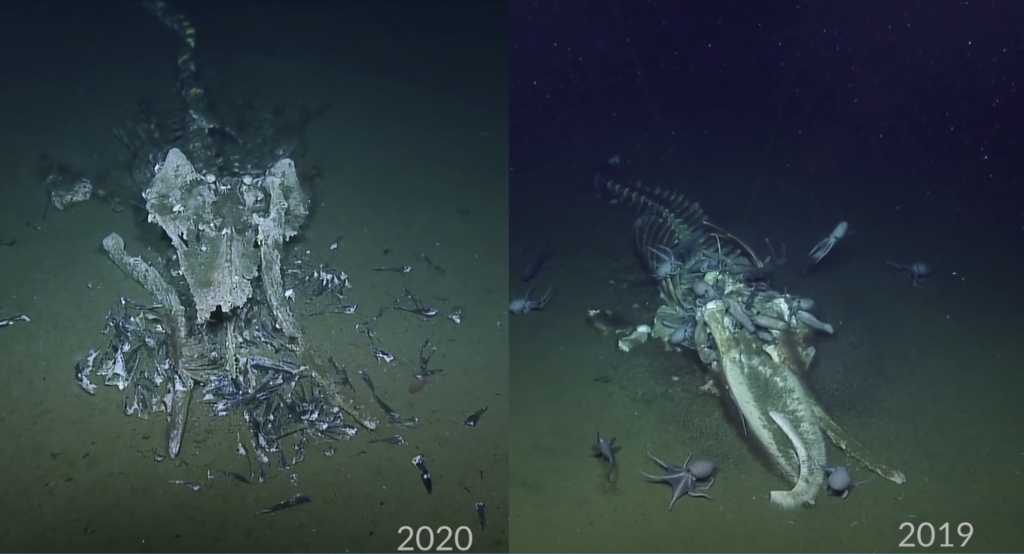
During an expedition aboard the E/V Nautilus in October 2019, Monterey Bay National Marine Sanctuary and Ocean Exploration Trust (OET) scientists discovered a whale fall near Davidson Seamount, about 90 miles off the coast of central California. It is estimated that there are only 75 documented whale falls in the world, and this was a relatively “fresh” one, discovered when it was approximately four months old/deceased. However, it was devoid of large scavengers like sharks, and being found more than 10,000 feet below the ocean’s surface may explain their absence. With a return trip one year later in October 2020, this presented a very rare and unique opportunity to assess the condition of the whale fall, and the ecological succession of the scavengers and other fauna covering the whale. The crew was astonished by how much the whale fall had changed. All of the soft tissue was gone, the ribs and vertebrae separated and fell to the seafloor, the baleen plates were scattered about, and much of the bone had become friable and very porous.
Several whale bones were collected (under a National Marine Fisheries Service permit) for examination and museum samples. Several morphs of the bone-eating worm (Osedax sp) were collected. Last year, a new species of Osedax from this whale fall was confirmed, and it’s quite possible there could new species in this year’s collection. You can read more about this expedition at the Office of National Marine Sanctuaries.
UPDATE (12/8/20): This whale fall has been identified as a common (or northern) Minke whale (Balaenoptera acutorostrata) by Dr. Robert Boessenecker from College of Charleston, South Carolina and confirmed by Maureen Flannery and Sue Pemberton at California Academy of Sciences. Key diagnostics are that the mandible is quite curved (the mandible is very straight in gray whales) and Minkes are the only species of whale with beige or cream-colored baleen. It’s also unlikely to be a juvenile humpback owing to the a crease in the squamosal bone seen on the skull, which is a feature unique to the species within Balaenoptera.